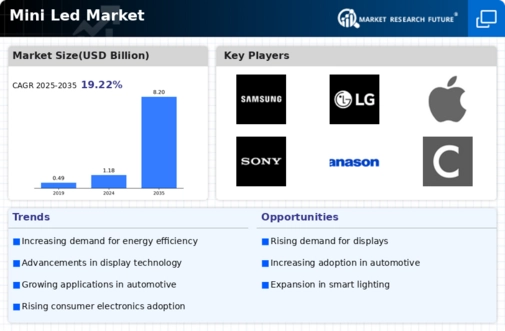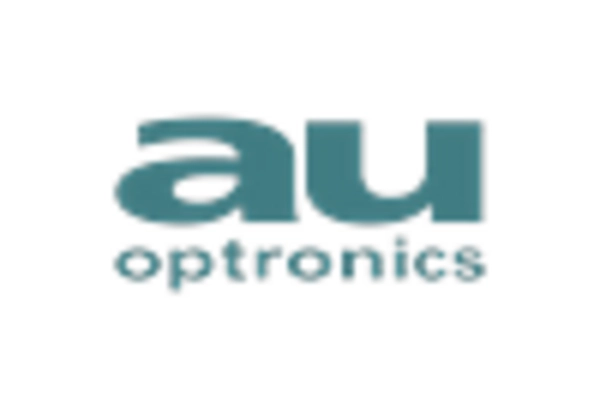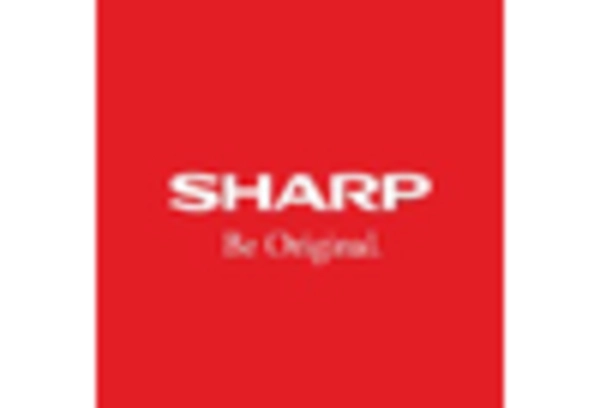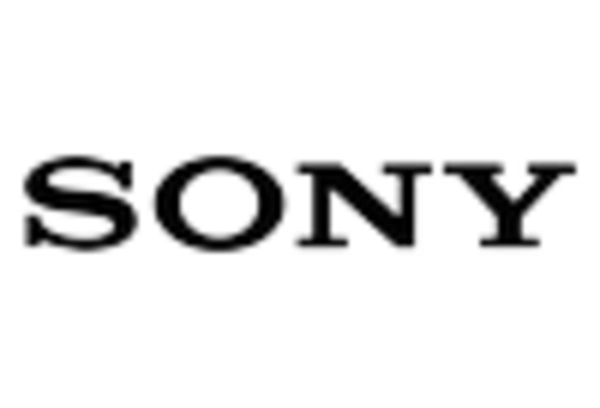Energy Efficiency and Cost Savings
Energy efficiency remains a pivotal driver within the Mini Led Market, as stakeholders increasingly prioritize sustainable solutions. Mini LED technology is recognized for its lower power consumption compared to traditional LED systems, which translates into significant cost savings for consumers and businesses alike. Reports indicate that Mini LEDs can reduce energy usage by up to 30%, making them an attractive option for energy-conscious consumers. This emphasis on energy efficiency is further supported by regulatory frameworks that encourage the adoption of greener technologies. As a result, the Mini Led Market is likely to witness heightened interest from both manufacturers and end-users who are keen on reducing their carbon footprint while enjoying the benefits of advanced display technologies.
Growing Consumer Electronics Market
The consumer electronics market is a significant driver for the Mini Led Market, as the demand for advanced display technologies continues to rise. With the proliferation of smart devices, televisions, and gaming consoles, manufacturers are increasingly integrating Mini LED technology to enhance visual performance. Market analysis indicates that the consumer electronics segment is expected to witness robust growth, with Mini LEDs playing a pivotal role in delivering superior image quality and energy efficiency. This trend is likely to stimulate further investment in the Mini Led Market, as companies seek to capitalize on the growing consumer appetite for high-performance electronic devices.
Rising Demand for High-Quality Displays
The Mini Led Market experiences a notable surge in demand for high-quality displays across various sectors, including consumer electronics, automotive, and advertising. As consumers increasingly seek superior visual experiences, manufacturers are compelled to adopt Mini LED technology, which offers enhanced brightness, contrast, and color accuracy. According to recent data, the Mini LED segment is projected to grow at a compound annual growth rate of over 20% in the next five years. This growth is driven by the proliferation of 4K and 8K resolution displays, which require advanced backlighting solutions. Consequently, the Mini Led Market is positioned to benefit from this trend, as it aligns with the evolving consumer preferences for immersive viewing experiences.
Expanding Applications in Automotive Sector
The automotive sector is increasingly embracing Mini LED technology, which serves as a crucial driver for the Mini Led Market. With the rise of electric vehicles and advanced driver-assistance systems, the demand for high-performance lighting solutions is on the rise. Mini LEDs offer superior brightness and design flexibility, making them ideal for applications such as headlights, taillights, and interior lighting. Industry forecasts suggest that the automotive segment could account for a substantial share of the Mini LED market by 2026, driven by the need for enhanced safety features and aesthetic appeal. This trend indicates a promising future for the Mini Led Market as it aligns with the automotive industry's shift towards innovative lighting solutions.
Increased Investment in Research and Development
Investment in research and development is a critical driver for the Mini Led Market, as companies strive to innovate and enhance their product offerings. The competitive landscape necessitates continuous advancements in Mini LED technology, leading to improved performance, reduced costs, and expanded applications. Recent data suggests that R&D spending in the display technology sector has increased significantly, with many firms allocating substantial budgets to explore new materials and manufacturing techniques. This focus on innovation is likely to yield breakthroughs that could further propel the Mini Led Market, enabling manufacturers to meet the evolving demands of consumers and businesses alike.


















Leave a Comment